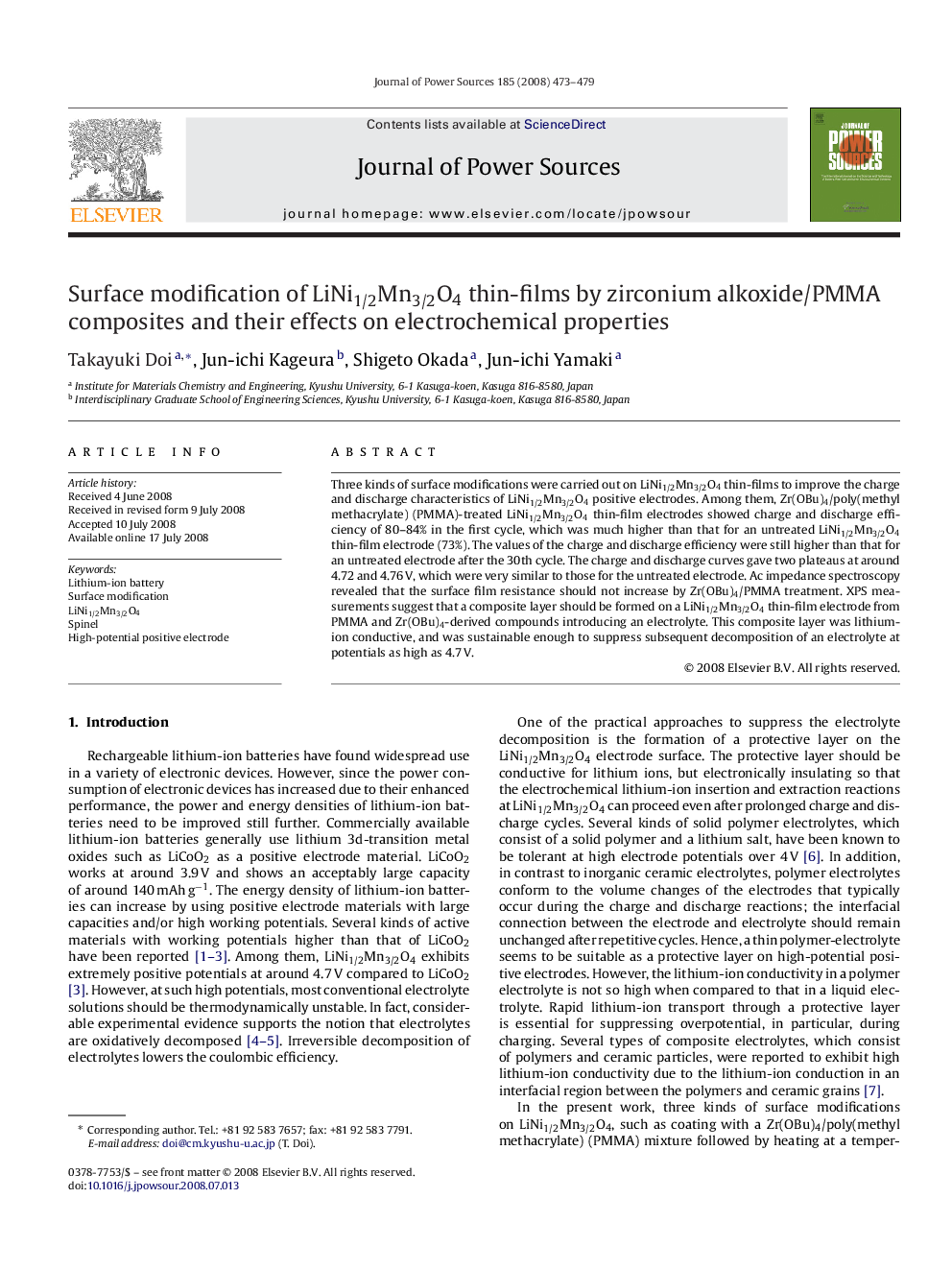| Article ID | Journal | Published Year | Pages | File Type |
|---|---|---|---|---|
| 1294437 | Journal of Power Sources | 2008 | 7 Pages |
Three kinds of surface modifications were carried out on LiNi1/2Mn3/2O4 thin-films to improve the charge and discharge characteristics of LiNi1/2Mn3/2O4 positive electrodes. Among them, Zr(OBu)4/poly(methyl methacrylate) (PMMA)-treated LiNi1/2Mn3/2O4 thin-film electrodes showed charge and discharge efficiency of 80–84% in the first cycle, which was much higher than that for an untreated LiNi1/2Mn3/2O4 thin-film electrode (73%). The values of the charge and discharge efficiency were still higher than that for an untreated electrode after the 30th cycle. The charge and discharge curves gave two plateaus at around 4.72 and 4.76 V, which were very similar to those for the untreated electrode. Ac impedance spectroscopy revealed that the surface film resistance should not increase by Zr(OBu)4/PMMA treatment. XPS measurements suggest that a composite layer should be formed on a LiNi1/2Mn3/2O4 thin-film electrode from PMMA and Zr(OBu)4-derived compounds introducing an electrolyte. This composite layer was lithium-ion conductive, and was sustainable enough to suppress subsequent decomposition of an electrolyte at potentials as high as 4.7 V.
